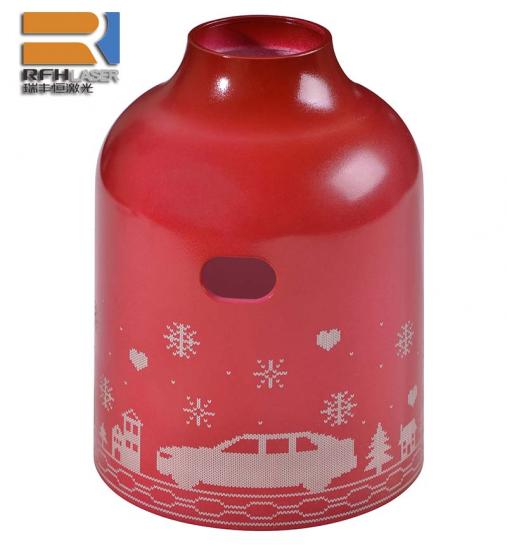Neuester Blog
So funktioniert 3D-Laserschneiden und -gravieren
Apr 11 , 2022How 3D laser cutting and engraving works
Metal object processed with 3d laser printer
3D is one of the most important innovations in the field of laser processing and is used in particular in the cutting of various materials and objects such as sheets and tubes, but also to create precise and aesthetically valuable engravings on metals, crystal or plexiglass.
The Laser 3D Cut
The need to cut two-dimensional and three-dimensional pieces such as tubes with round, square or rectangular section, profiles, but also beams, sheets and flat sheets has led to the development of 3D laser cutting technology that allows you to create a wide range of industrial components for various sectors, as well as very high quality manufacturing products.
The main sources used in this technique are the fiber optic laser. 3D laser processing is based on the principle of concentrating a coherent beam of light on a limited area in order to be able to cut or engrave the material.
In this specific case the laser machine, in addition to operating on linear axes X, Y and Z, also acts at the level of inclination and rotation.
3D laser cutting is successfully used for sheet metal processing, allowing the most varied geometric shapes to be engraved and thus providing added value to the final product.
The 3D laser also offers the opportunity to modify the project at any time and is therefore an advantageous technology both for producing samples and for mass production.
Laser cutting and engraving on metals
For further information read -> From the C02 Laser to the Fiber Laser, let's discover the most popular types of lasers

uv laser | green laser | Ultraviolet lasers | uv dpss laser | nanosecond laser | UV laser source | Solid State Lasers
Advantages
The great flexibility and adaptability of the laser allows operators to work easily and easily both sheets and complex metal materials, using reduced bending radii so that the 3D laser technology is perfect for cutting both two-dimensional and three-dimensional components, small, medium and large.
Other advantages of 3D laser cutting are:
the speed of execution with consequent savings in production costs,
the minimum heating of the processed material which in this way preserves all its original characteristics intact,
the absolute absence of mechanical deformations of the worked piece,
the high quality of the cutting edge, which is extremely clean, so once the laser cutting has been made there is no need for further processing.
laser cutting and engraving on wood
How 3D laser engraving works
A process made possible by the use of the 3D laser is the incision with which a surface layer of a certain material is removed, thus creating a millimeter notch inside it.
With the use of this highly innovative, fast and efficient technique, it is possible to engrave various graphic elements including logos, codes, texts or decorative elements.
The engraving has a high aesthetic quality ensuring accurate and uniform details and is indelible so it does not deteriorate or fade over time.
The flexibility of this type of laser allows to operate on different surfaces and materials such as metal and stainless steel; other areas of use are 3D laser engraving on crystal, glass and plexiglass.
Punch of a steel mold worked with the LaserIn the case of glass laser engraving, this is performed mainly using the CO2 laser source. The laser beam penetrates the crystal and creates the tiny points that then form the image you want to engrave, ensuring an ultrafine detail processing even when dealing with a curved surface.
Moderne 3D-Lasergravurmaschinen für Glas sind mit Hochgeschwindigkeits- und Präzisionsscannern und fortschrittlicher Software ausgestattet, die es ermöglichen, sie insbesondere zur Herstellung eleganter Werbematerialien zu verwenden, da der Laser es Ihnen ermöglicht, Fotos, filigrane Designs, auf Glas zu gravieren. Zeichen und Logos.
Die 3D-Lasergravur auf Plexiglas wiederum wird verwendet, um Gadgets auf einzigartige und elegante Weise zu personalisieren. Auch die Lasergravur auf Plexiglas wird in der Regel mit CO2-Lasermaschinen durchgeführt, die durch Hitzeeinwirkung auf das Material einwirken und die gewünschten Designs erzeugen.
Laseranwendung auf Plexiglasobjekt
Einsatzgebiete der 3D-Laserbearbeitung
Die Branchen, in denen die 3D-Laserbearbeitung zum Einsatz kommt, sind vielfältig. Die Flexibilität und Vielseitigkeit des 3D-Laserschneidens machen diese Technik ideal für Branchen wie die Automobilindustrie, den Maschinenbau, die Herstellung von Luft- und Schiffsprototypen und ganz allgemein für den Transportsektor.
Die 3D-Technologie ermöglicht die Modellierung von Bauteilen und Halterungen auch in anderen Bereichen wie Haushaltsgeräte, Elektro- und Elektronikbranche, Bauwesen und Möbel.
Diese Art der Bearbeitung ist auch ideal in Bereichen, die mit der Modewelt zusammenhängen, wie z. B. Schmuck, während die 3D-Oberflächenlasergravur es Ihnen ermöglicht, verschiedene Elemente nicht nur in zwei, sondern auch in drei Dimensionen zu markieren, was die Arbeit der Bediener erheblich erleichtert mit mechanischer Mikrobearbeitung und dem Formenbau.
Weitere Informationen finden Sie unter -> Lasergravur auf Juwelen: Geschwindigkeit, Präzision und Effizienz
Die enge Zusammenarbeit und Synergie zwischen den verschiedenen Industriezweigen und den Herstellern von Lasermaschinen hat die Geburt von technischen Lösungen ermöglicht, die bis vor wenigen Jahren noch nicht einmal vorstellbar waren, und die Zukunft scheint weitere interessante Überraschungen bereitzuhalten.